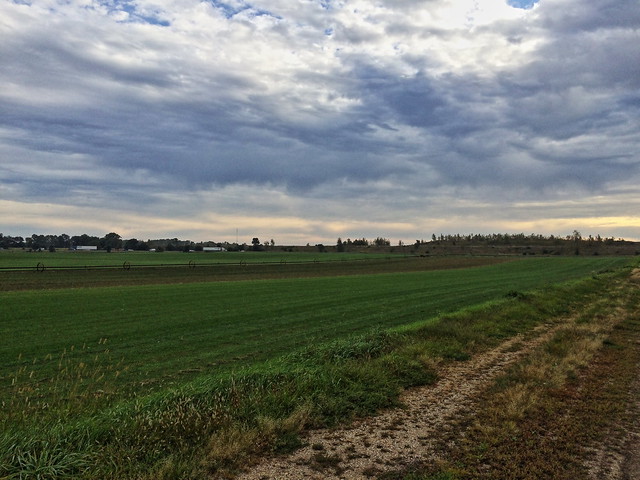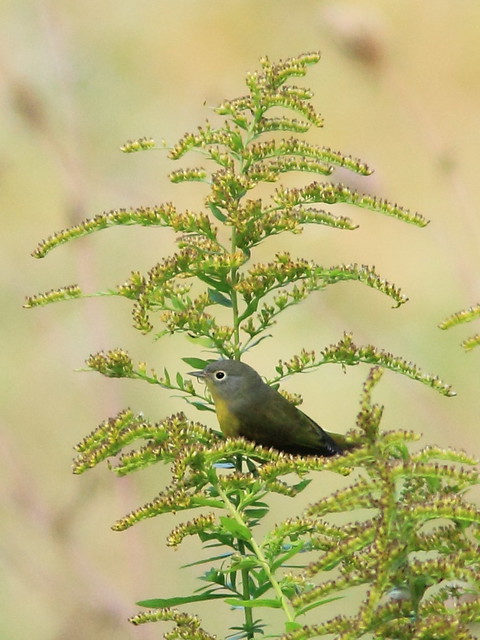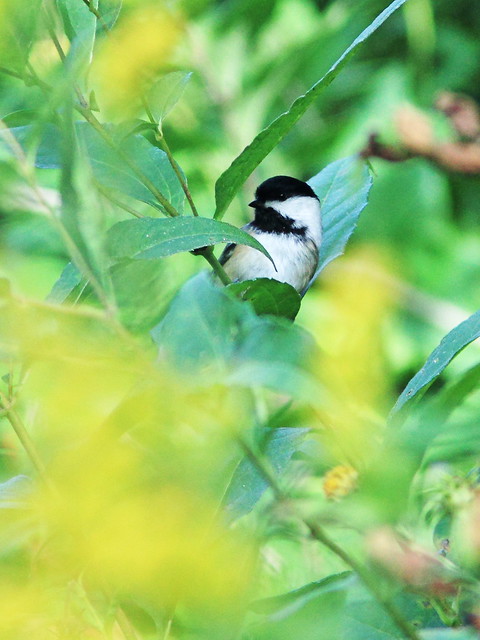
We dipped on both, but did find three American Golden-Plovers as we scanned this extensive sod field.

Two foraged together out in the open turf.

One allowed comparison of its size and shape to a Killdeer, also a member of the plover family.

Another golden-plover appeared closer to the path.

American Goldfinches had already changed into their drab winter plumage.


This male goldfinch retained some of its summer brilliance.

A Nashville Warbler joined the goldfinches on the goldenrod, now going to seed.

Black-capped Chickadees were numerous but so restless that I had trouble keeping one in my viewfinder.

A long-legged Palm Warbler flew up into a small tree, characteristically wagging its tail.

This Philadelphia Vireo was a nice find. The similar Warbling Vireo lacks the black line in front of its eye and bright yellow on its throat and central breast, quite evident in this photo.

The beginning of October heralded the arrival of the Yellow-rumped Warblers, and signaled that fall warbler migration was drawing to a close. Suddenly the trees were alive with them.

Now it was time to await the arrival of the next wave of visitors, sparrows and finches from the north. Following up on a lead from a local birder, we visited nearby Prairie Green Preserve in Geneva, Illinois.
We followed an indistinct path through the high grass and found the elusive Nelson's Sparrow at the edge of the marsh. This was my first opportunity to photograph this species.

I was afraid to use my flash as it might frighten the bird, so shadows obscured its amazingly bright orange head and chest.

Another target species was the Marsh Wren, which also had eluded my camera. I was not disappointed, as 4 or 5 flitted about in the cattails.


A Swamp Sparrow provided perhaps the best photos I have ever obtained of this species.


To top it off, a Lincoln's Sparrow appeared unexpectedly.

The sparrow was "photo-bombed" by a Common Yellowthroat that popped up beside it in the cattails.

Suffice it to say that this was a very satisfying visit despite the hundreds of nettles that we had to remove from our trousers and socks!
A Clouded Sulphur butterfly on red clover, October 1st:

On October 4th it turned cold and we had snow flurries! Monarch butterfles endured the cold and appeared in good numbers as the morning sun warmed them on October 8th.
